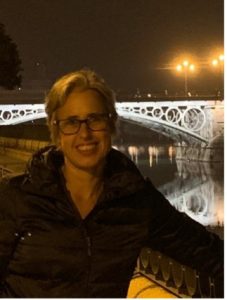Abstract: The field of image analysis is concerned with analysing and extracting information from images, as a whole, and the objects within, as its parts. Combinatorial image analysis, a subfield of image analysis, studies combinatorial properties of digital images (more generally any digital data-set). Algebraic topology is a field of mathematics concerned with the study of deformation-invariant properties of abstract objects. Within this project we research tools (methods) for combinatorial image analysis that build on the theory of topology, specifically its sub-fields (persistent-) homology and cohomology. For this purpose we will: (i) create methods to robustly extract “objects” from digital images and describe them in a way that allows further processing, and (ii) extend the existing theory and methods to compute relevant topological properties of objects. The project is based on ongoing research of our Andalusian group FQM-369 “Combinatorial Image Analysis”. The proposed tasks are:
(T.1) Combinatorial representation of objects.
(T.1.1) Well composed complexes. The extraction of objects from digital images can be ambiguous, partially due to the fixed resolution of the image. The 2D manifold that is the surface bounding a real 3D object, might appear to be non-manifold in the image, with e.g. many 2D patches incident to the same edge. This task deals with the computation of cell complexes, homotopy equivalent to the initial representation of the 3D image, whose boundary surface is composed by 2D manifolds.
(T.1.2) Efficient (co)homology computation of combinatorial representations. Cohomology groups provide a richer information than homology because of the cup product computation, which has traditionally been computed only for cubical and simplicial complexes. This task is concerned with creating methods to efficiently compute (co)homology information (including the cup product on cohomology) of subdivided objects.
(T.2) Persistent homology. (T.2.1) Extending persistent homology. The incremental algorithm for persistent homology by Edelsbrunner et al., is currently the de facto standard for extracting topological information, especially Betti numbers when an object is seen as a sequence of additions from a point cloud data. A first aim of this task is to extend persistent homology to other operations like removal and merging of cells. A second aim is to extend persistence theory to cohomology and cup products.
(T.2.2) Persistent Homology for analyzing 3D models. We are concerned with the application of persistent homology computation for analysing 3D models. As main goal, we intend to provide topological evaluation of the 3D reconstruction process by the voxel carving method, which is a non-invasive technique that is used to produce a 3D volume from images captured from a set of cameras placed around the object. Another application in which we are also involved is in gait recognition using persistent homology.
Source of Funding: 2012 National Plan /MTM2012-32706
Implied entities: Universidad de Sevilla, Technical University of Viena (Austria), Millersville University (USA), Dublin City University (Ireland)
iMAT research line: ⊕ RL2. Modeling of Biological Systems and Health
Researchers:
María José Jiménez Rodríguez
Walter Korpatsch
Belén Medrano Garfia
Noel E. O’Connor
Beatriz Silva Gallardo
Ron Umble

 PI:
PI: 